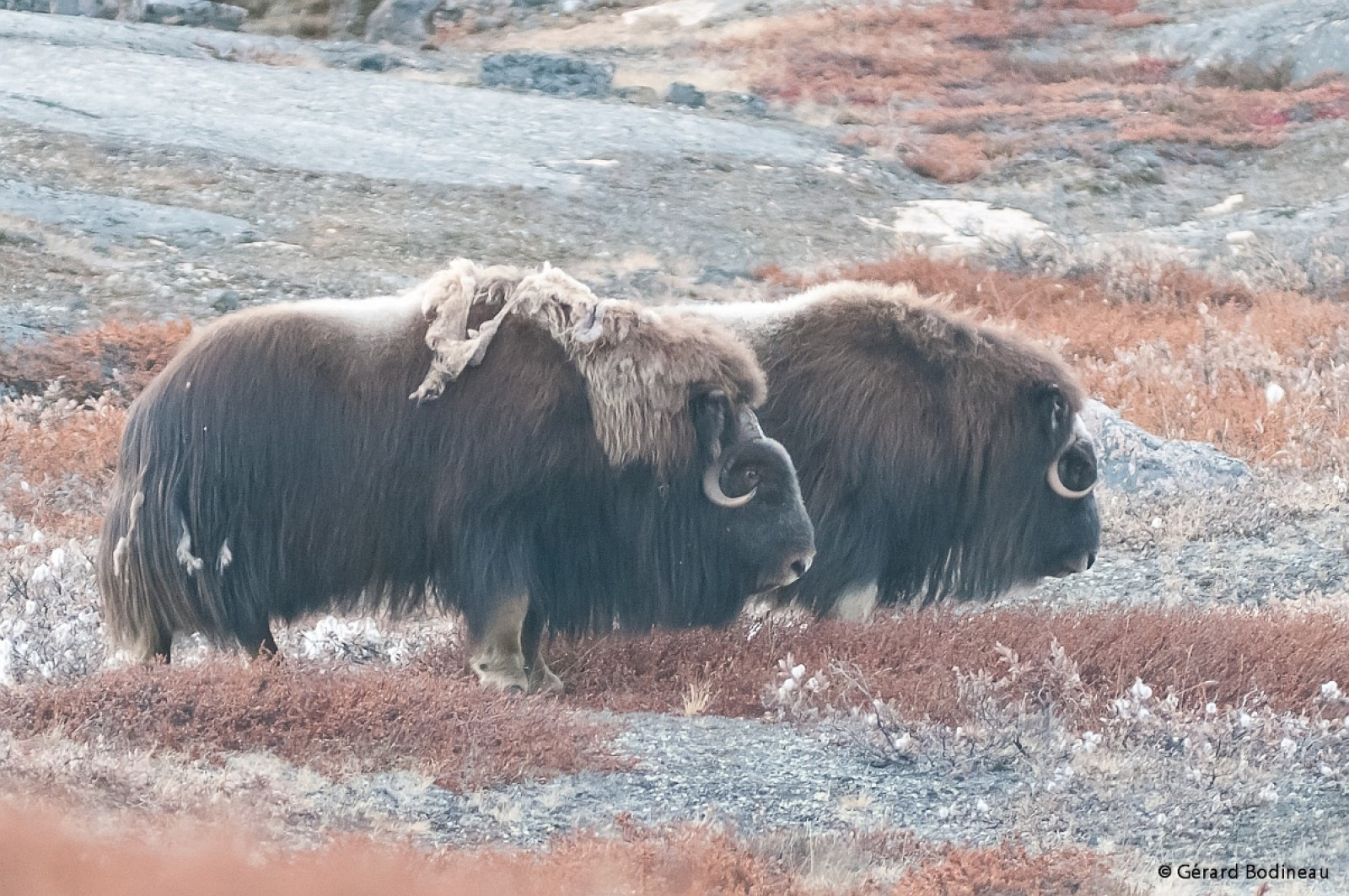Musk oxen matters of fact
Given how violent their lives can be, it may come as some surprise that musk oxen live as long as they do. Twenty years, after all, is a long time when you’re regularly charging, kicking, and head-butting the fellow members of your herd.
But that’s the hard-knock life of the average musk ox.
Musk oxen are a rugged group of hooved, hairy animals more closely related to goats and sheep than any other species – even oxen. Known in binomial nomenclature as Ovibos moschatus, musk oxen get their English name from the strong smell males give off during mating season.
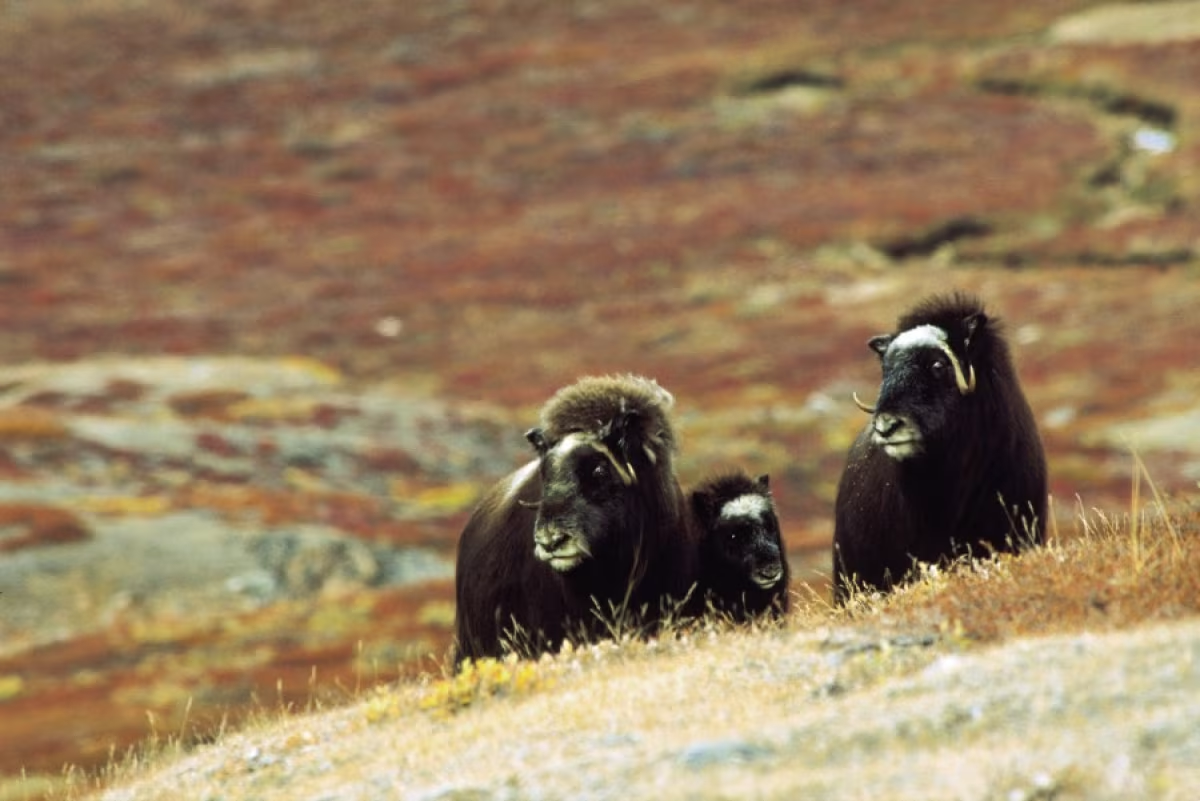
We sometimes see musk oxen in Greenland, staring back at us as if to say, “What are you gonna do about it?” But despite their impressive appearance, these Arctic survivalists don’t often get the attention they deserve.
Here to help rectify this injustice are eight interesting facts about this aggressive but much-loved Arctic animal.
1. Musk oxen wool is among Earth’s warmest natural fibers
We’ve mentioned before that Arctic fox fur is one of the most insulating fibers grown by any animal, but musk oxen fur is an especially close competitor.
Musk oxen have two layers of fur: The outer layer is known as “guard hair,” and the inner layer is called “qiviut.” The guard hair is coarse and long and almost reaches the ground, repelling water and blocking ultraviolet rays. The qiviut is decidedly different.
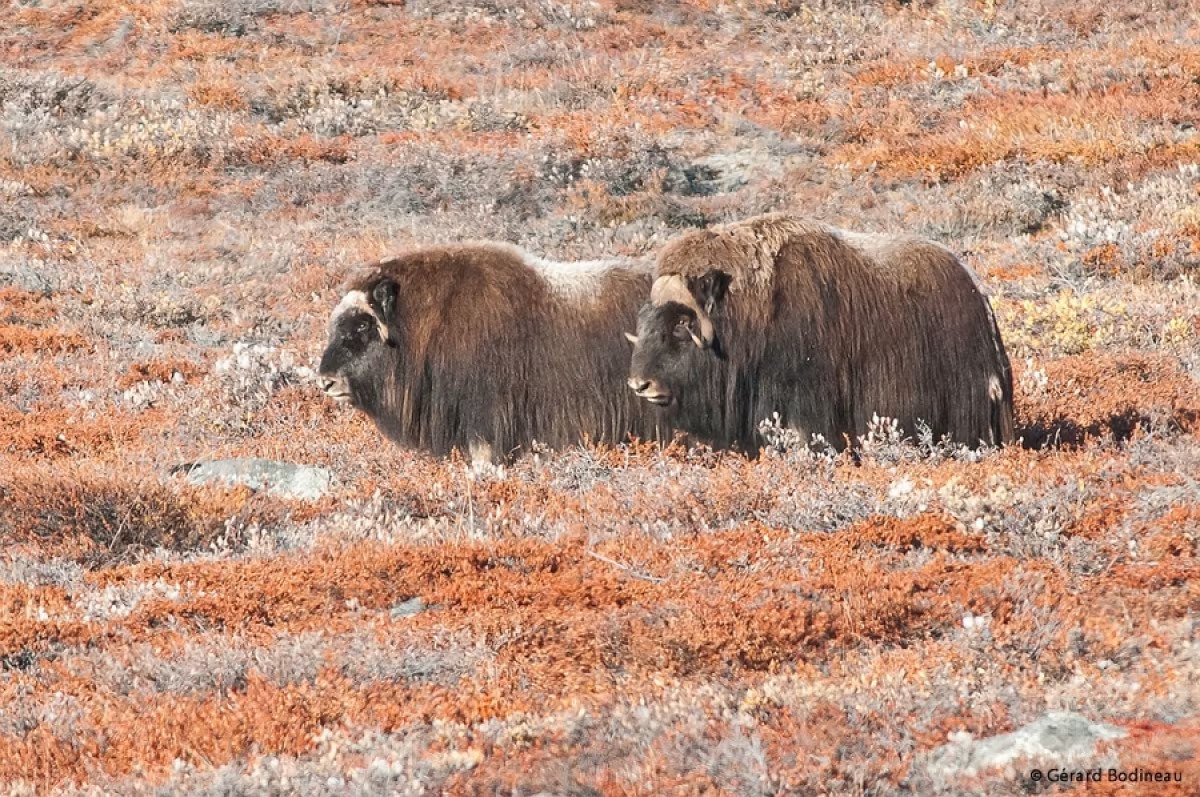
Qiviut is a soft underwool that musk oxen shed each spring. It is stronger than sheep’s wool, eight times warmer, and reportedly softer than cashmere. It also doesn’t shrink in water and is very durable, lasting more than 20 years with good maintenance.
Not surprisingly, it comes with a hefty price tag.
2. Herding is a core musk oxen social ritual
Musk oxen are herding animals, forming groups of 12 to 24 members. In the Arctic summer, these herds slightly disperse, reducing to about eight to 20 musk oxen per herd.
While musk oxen don’t hold territories, they do mark their trails with pre-orbital glands below their eyes that secrete scent markers.
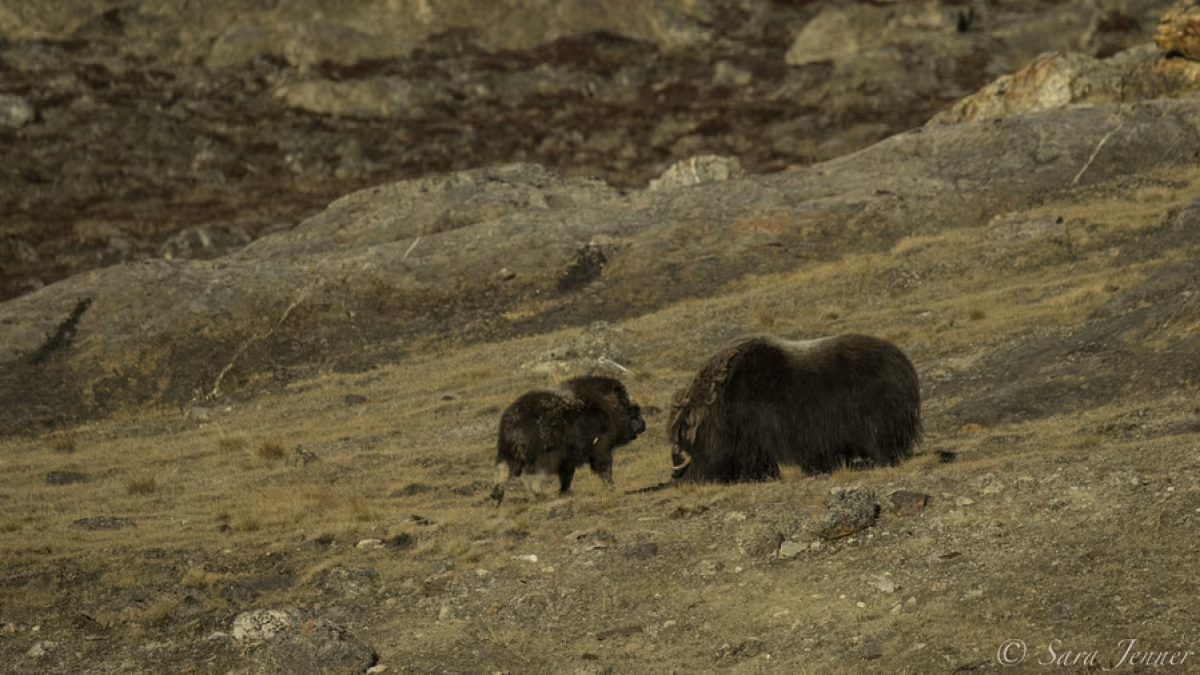
Dominant male musk oxen chase competitors from the best food sources by pawing the ground, swinging their heads, roaring, and engaging in “rush and butt” rituals. They may even kick other males like they do with females during mating season, or sometimes mock-mount them.
When threatened, however, musk oxen herds band together. Forming a protective circle with their horns directed outward, bulls make up the first line of defense.
3. The musk oxen diet is strictly vegetarian
Arctic willows, grasses, woody plants, lichens, and mosses comprise the musk ox’s diet. As such, musk oxen tend to stick to wet areas like river valleys, only moving to higher elevations to avoid the heavy snows of winter.
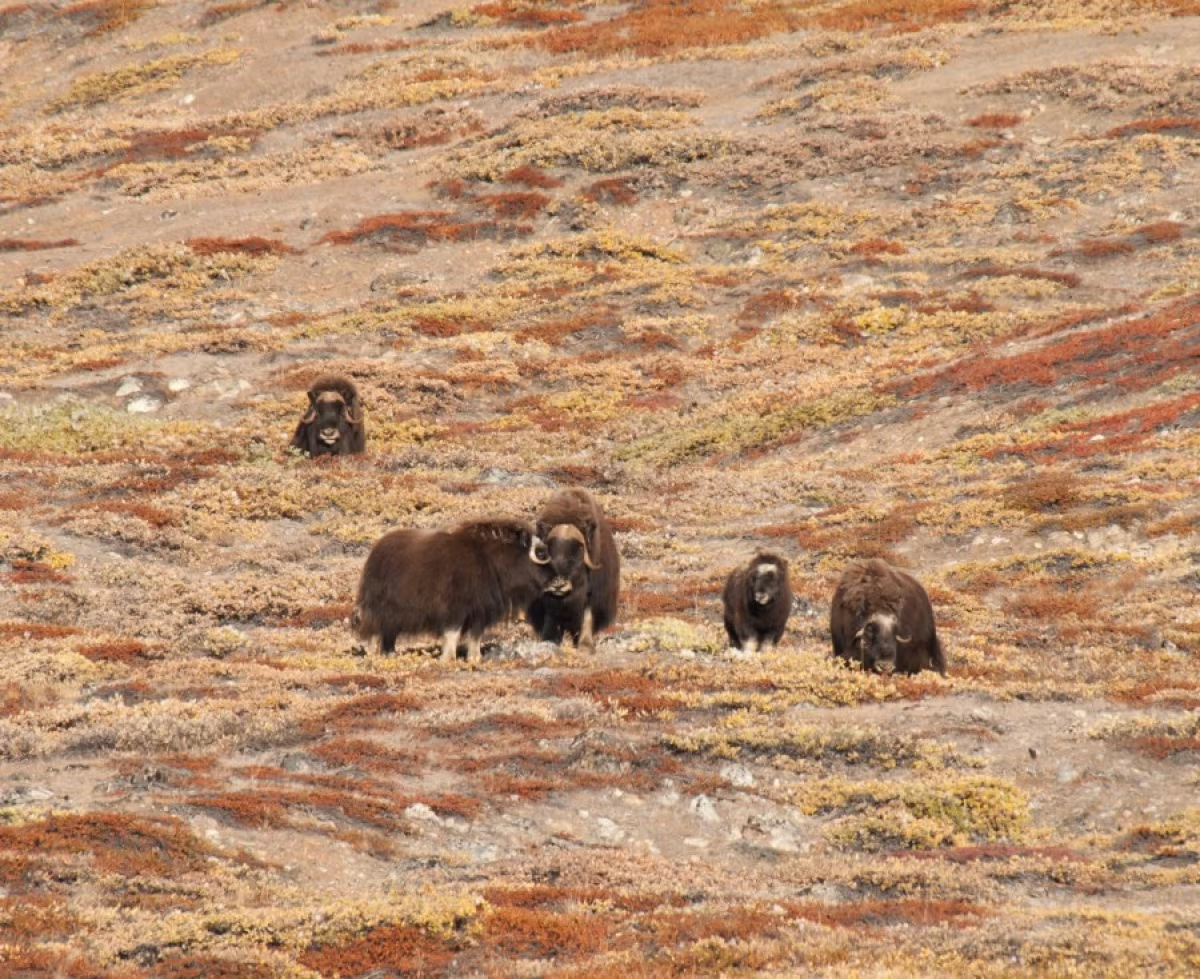
During the winter, musk oxen tend to live on willows. In seasons when food is more readily available, though, they like to eat the lusher and nutritious grasses.
4. Breeding is rough-and-tumble affair for musk oxen
As mentioned before, the musk ox’s social order is largely based on an aggressive hierarchy of dominant males subordinating juveniles and the less aggressive males. Their relationship with females, especially during mating season, is no different.
Reaching sexual maturity at ages three and five respectively, female and male musk oxen begin their breeding ritual in early July.
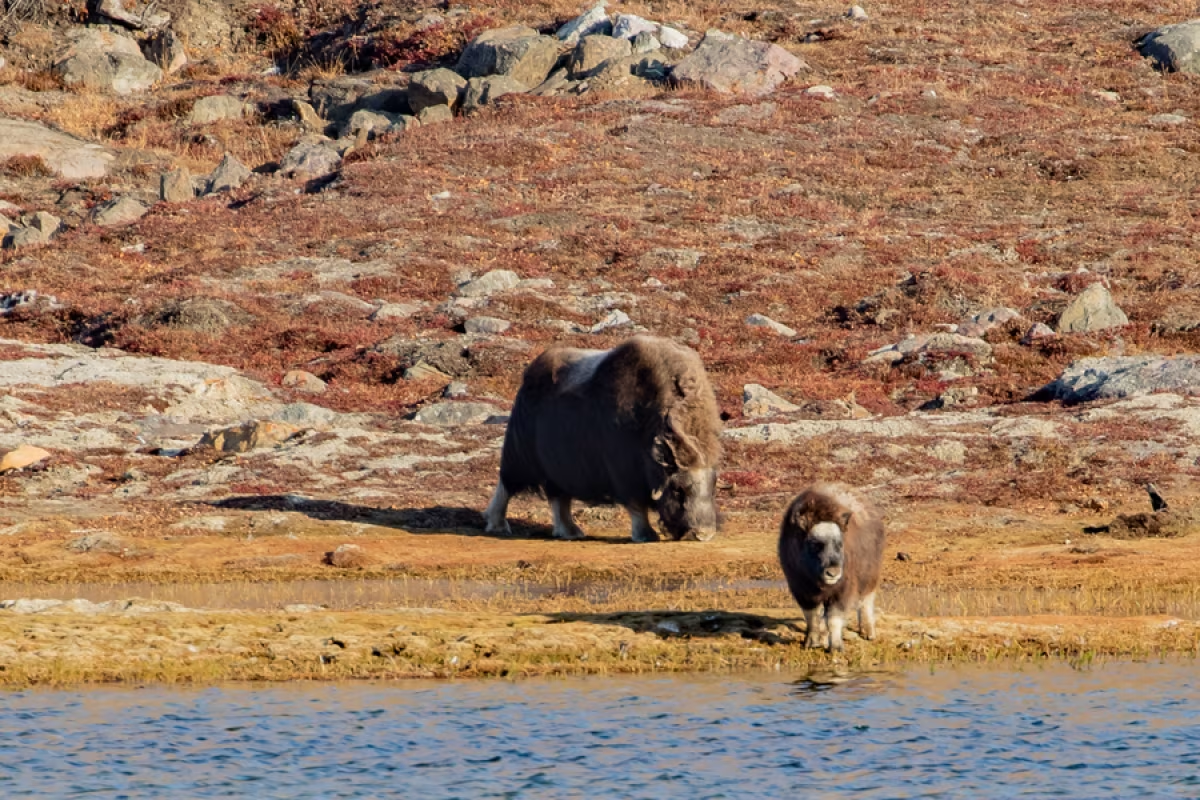
Males charge and ram each other until subordinates give way, creating harems of around six females. The musk oxen regroup as a unified herd at the end of summer, after which females give birth. These female musk oxen then grow aggressive, deciding on grazing ranges.
Calves are born from April to June, nursing on their mothers’ milk for two months but ready to move with the herd within a few hours of birth.
5. Musk oxen have very protective heads
You might be wondering how musk oxen survive all that head-based bashing and thrashing without turning into drooling, braindead lemmings – particularly at the start of mating season.
They get by remarkably well, in fact.
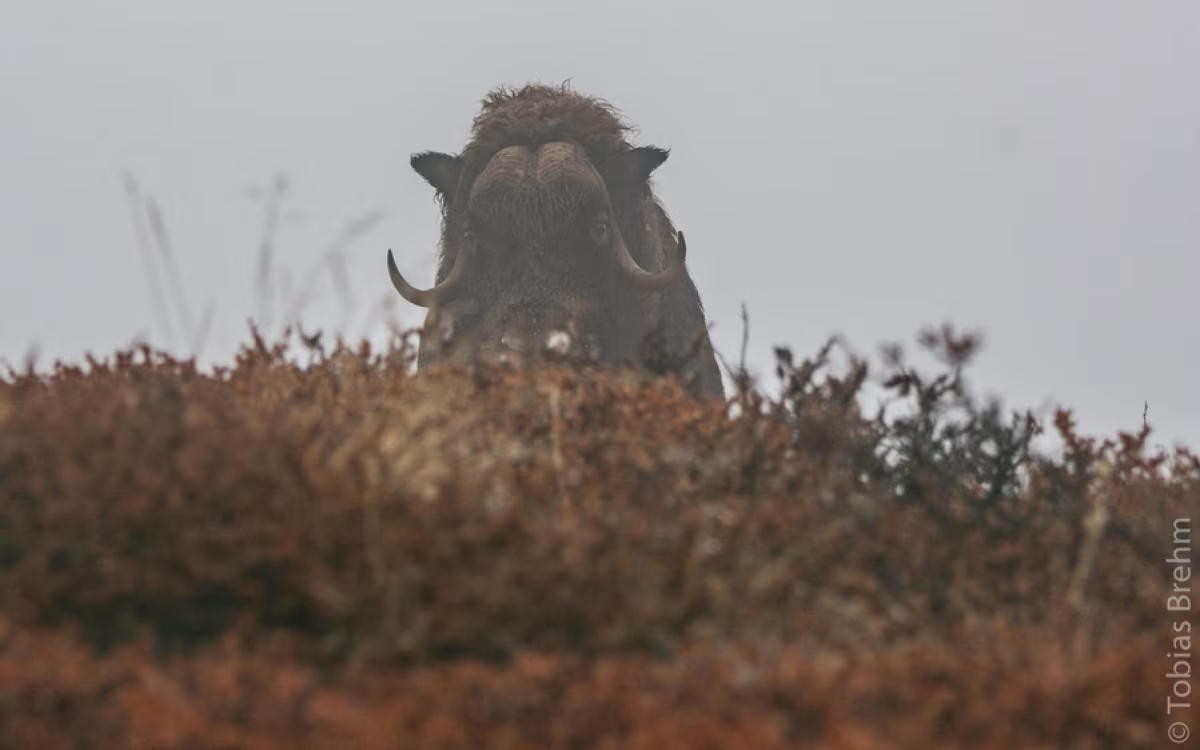
A protective pocket of air between musk oxen’s brain and skull keeps these two vital parts of their anatomy from coming into concussive contact, preventing any serious damage to the animal’s cerebrum. In other words, world’s worst boxing opponents.
6. Despite their size and strength, musk oxen have a few predators
Even the sturdiest animals have predators (human or otherwise), musk oxen included.
Musk oxen often fall prey to Arctic wolves, which indeed account for about half their deaths by predation. Polar bears also sometimes kill musk oxen, and grizzly bears have been known to go after the more southerly herds.
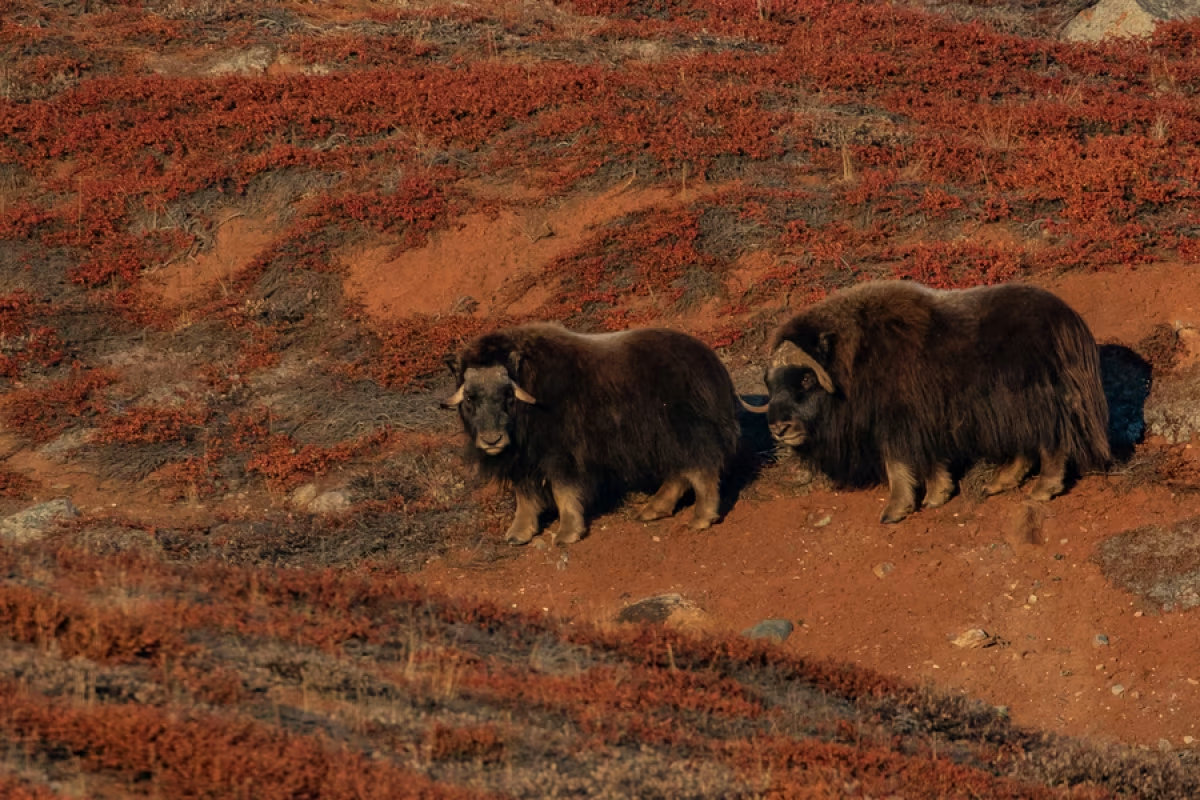
Death by bear, however, usually only happens to very young or very old musk oxen, either those that are part of smaller sub-herds or those whose herding defenses failed to protect them.
7. Musk oxen survived the last ice age
Surviving an ice age gives you some pretty sizable street cred.
One of only two Arctic species to claim this feat (the other being reindeer), the musk ox emerged from the Pleistocene Era about 10,000 years ago. But its numbers were greatly reduced, with only the North American population surviving.
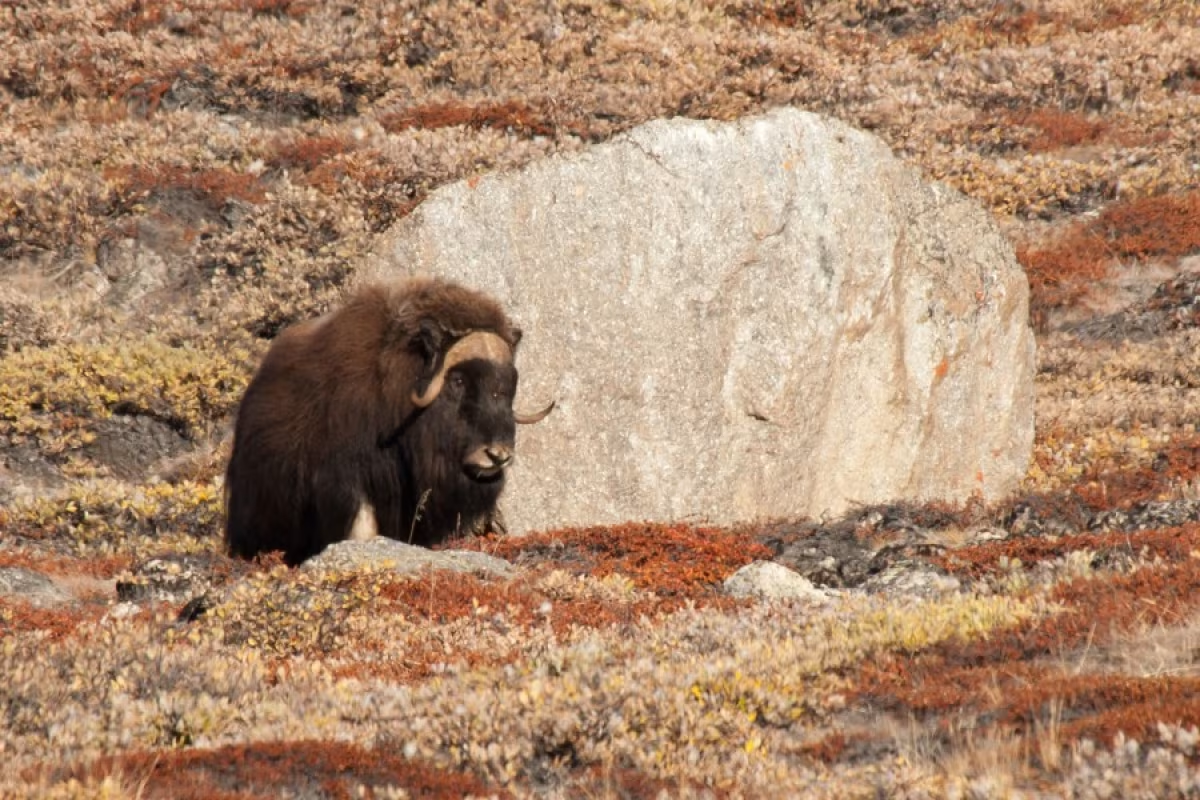
This population gradually moved across the Canadian Arctic Archipelago, arriving in Greenland via Ellesmere Island around 350 CE, in the later part of the Halocene, our current geological epoch.
8. Not only that, musk oxen recovered from near-extinction
As if weathering an ice age weren’t enough of a feather in their cap, musk oxen also returned from near-extinction in North America.
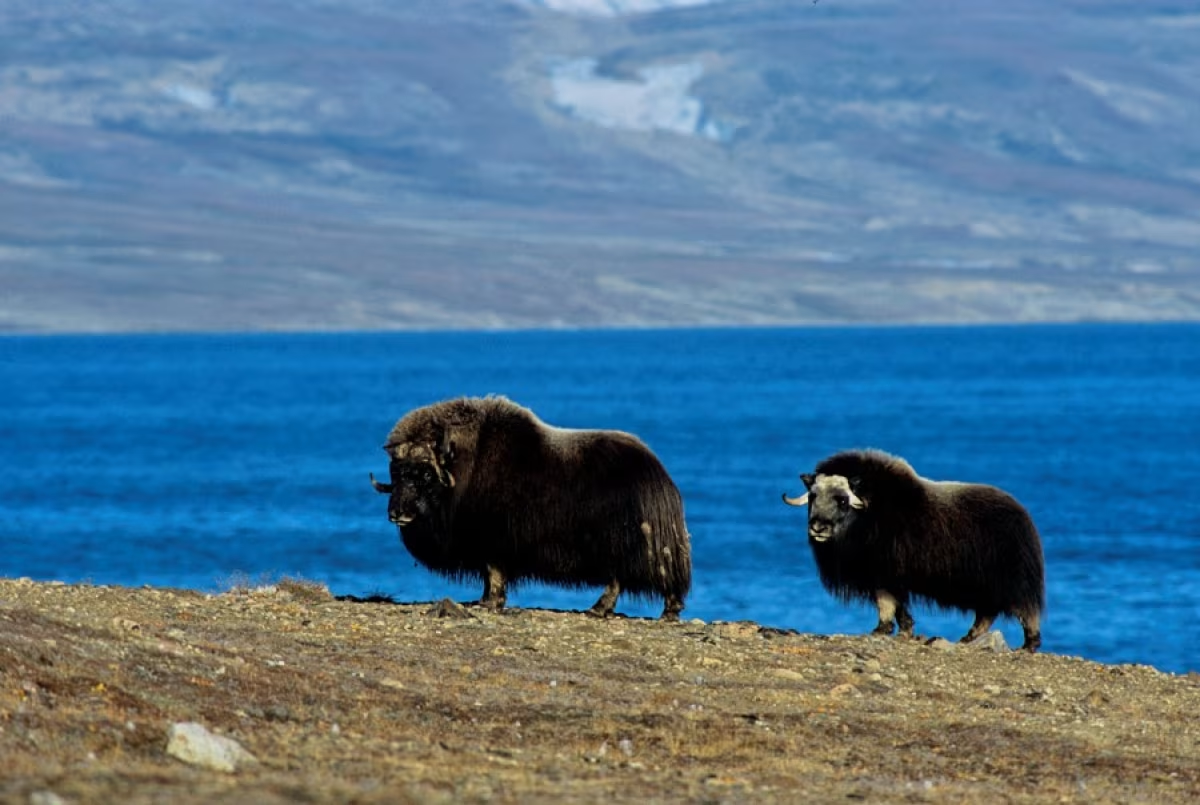
By the late 19th century, there were almost no musk oxen left in North America’s northern regions. Even so, this population was eventually renewed following the introduction of 34 musk oxen shipped from Greenland in the 1930s.
Today there are an estimated 80,000 to 125,000 musk oxen alive in the world, and their conservation status is of least concern.
Well done, musk oxen. You make us proud.
